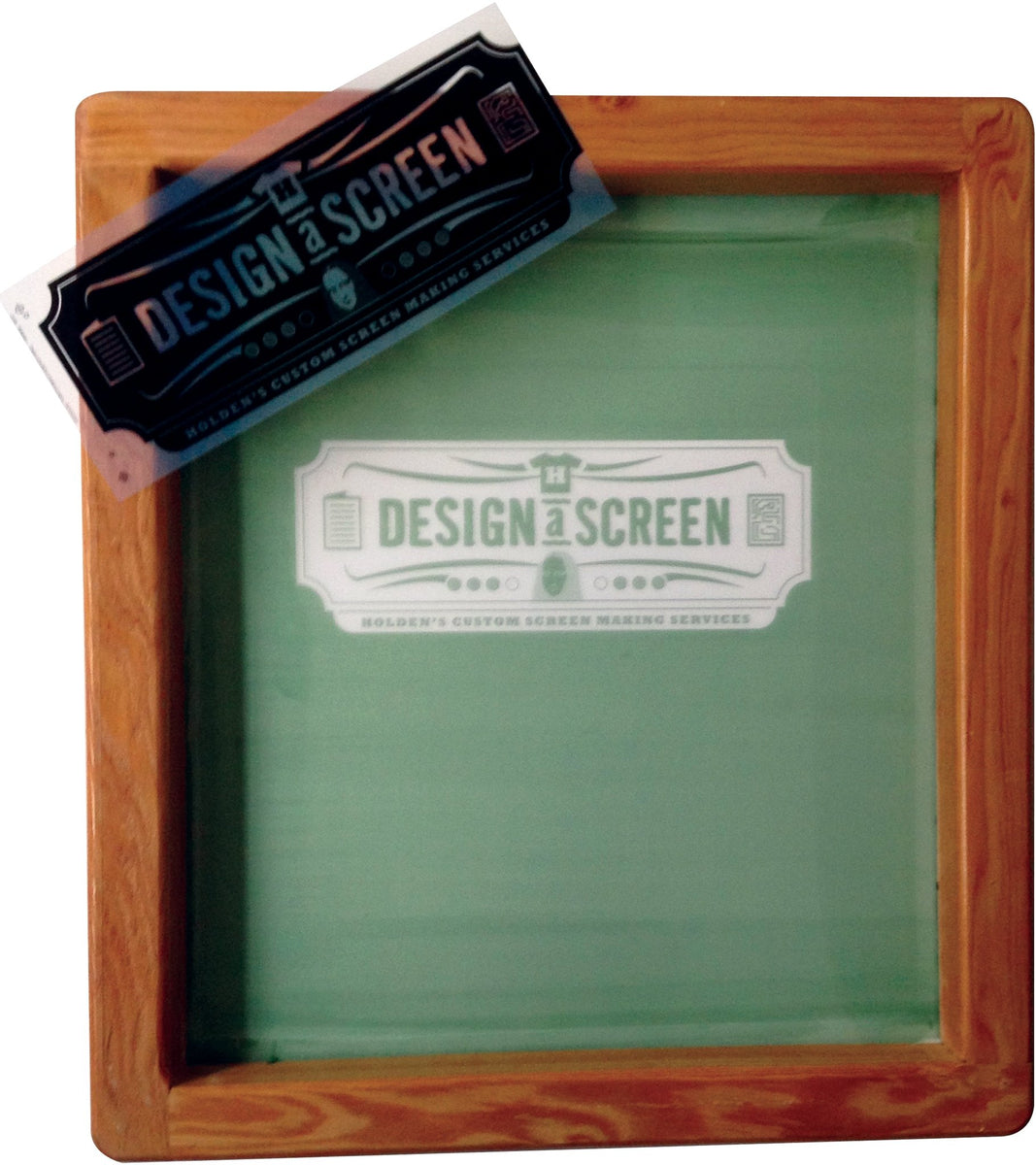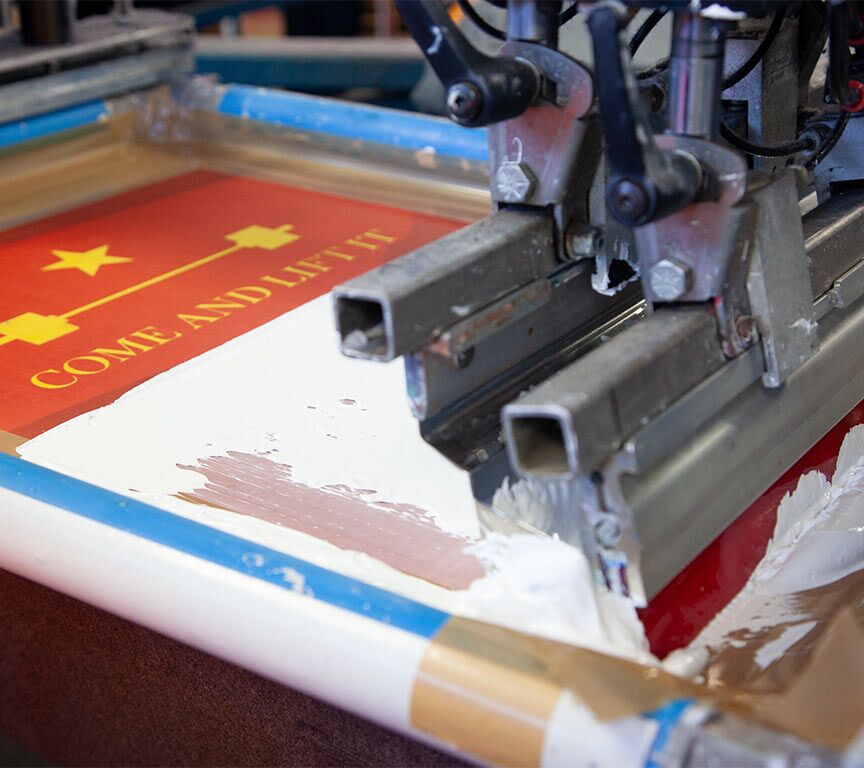High-Quality Custom Screen Printing for Team Apparel
High-Quality Custom Screen Printing for Team Apparel
Blog Article
Understanding Silk Screen Printing: Idea for Creating Stunning Styles
If you're seeking to master silk screen printing, you'll need greater than simply enthusiasm. It needs a solid understanding of techniques, the right tools, and careful preparation. You'll find exactly how to prepare your artwork and deal with common concerns that can arise during the procedure. By the end, you'll prepare to produce stunning designs that reflect your unique design. Initially, allow's discover the necessary fundamentals that lay the groundwork for your success.
Recognizing the Basics of Silk Display Printing
Silk screen printing, commonly called display printing, is a versatile method for transferring designs onto numerous products. You'll find it's optimal for printing on fabrics, paper, plastic, and much more. The process entails producing a stencil, or display, that enables ink to go through just in certain areas, producing tidy and vibrant styles.
To get going, you'll require to prepare your art work, guaranteeing it remains in an ideal format. screen printing kit. You'll layer your display with a light-sensitive solution and subject it to light when you've got your layout ready. This step produces a pattern of your style on the display
After rinsing the unexposed emulsion, you're established to publish. Align your display over your material, use ink, and utilize a squeegee to push the ink with the display. It's everything about method and patience, so do not think twice to experiment and improve your method as you go.
Crucial Devices and Materials You'll Need
To start with silk screen printing, you'll need a couple of fundamental materials like displays, mops, and ink. When you're comfortable, you can discover sophisticated equipment that enhances your printing high quality and effectiveness. Allow's review what you'll need to assure your jobs succeed from the start.
Standard Silk Screen Products
Starting on a silk screen printing project needs a couple of crucial devices and materials to ensure your success. You'll require a silk display framework, which holds the mesh that transfers your design. A squeegee is vital for pushing ink via the screen onto your substratum.
Advanced Printing Tools
When you prepare to take your silk display printing to the following degree, investing in sophisticated printing equipment can make a substantial distinction. A top notch screen printing press is necessary; seek a multi-color press that permits for precise registration and quicker production. You'll also wish to update to a more reliable direct exposure system to guarantee your layouts are sharp and vivid.
Take into consideration purchasing a trusted heat resource, like a conveyor clothes dryer, for also healing of inks. Do not forget specialized inks; water-based and discharge inks give outstanding outcomes on different textiles. A good collection of squeegees and emulsion scoop coater will streamline your procedure, providing your designs that expert edge.
Preparing Your Art Work for Printing
Preparing your art work for silk display printing is important to attaining vivid, specialist outcomes. Begin by confirming your layout remains in the best format-- vector documents like.AI or.EPS work best. In this manner, your artwork keeps quality at any kind of size. Next, examine the color mode; usage CMYK for accurate shade depiction.
When your file is prepared, produce a different layer for every color in your design. This'll make it simpler throughout the printing process. Do not fail to remember to add registration marks to straighten shades correctly.
Also, think about the mesh count of your screen; better information could require a higher mesh matter. Ultimately, save your artwork with a resolution of at the very least 300 DPI to assure crisp prints. By following these actions, you'll establish yourself up for a successful printing experience and bring your styles to life beautifully.
The Screen Printing Refine: Step-by-Step
Now that you've prepared your art work, it's time to concentrate on the display printing process itself. You'll start by preparing your screen, guaranteeing it's all set for the ink application. From there, you'll discover different printing methods to attain the very best results for your task.
Preparing Your Screen
Getting your screen ready is a critical action in the silk display printing procedure. First, clean the display completely to get rid of any kind of dust, oil, or deposit. Utilize a degreaser and wash it well to guarantee a smooth surface area for your emulsion. Next off, use a light coat of emulsion evenly throughout the display making use of an inside story coater. Make certain to do this in a poorly lit location to prevent premature exposure. Permit the emulsion to completely dry totally before revealing it to your layout. Once completely dry, put your openness on the display and utilize a light to expose the style. After direct exposure, clean out the unexposed emulsion, and you'll have your display planned for printing.
Printing Methods Explained
Once your display is prepared, you can plunge right into the amazing procedure of printing. Next, pour your ink onto one side of the display and use a squeegee to draw the ink across the design. Tidy your screen quickly to protect against ink from drying out and obstructing the mesh.
Tips for Achieving Vibrant Color Styles
While achieving dynamic shades in silk display printing may appear tough, you can easily elevate your styles with a few crucial methods. First, pick high-grade inks especially made for silk screen printing; they give far better coloring and protection. Blending inks properly can also enhance vibrancy-- experiment with ratios to find the best mix that stands out.

Finally, do not forget treating your prints properly. Proper warm establishing guarantees the colors bond with the fabric, maintaining their vibrancy over time. By implementing these strategies, you'll produce magnificent, captivating styles that really shine.
Repairing Usual Printing Issues
Despite having dynamic colors in your layouts, silk display printing can often provide difficulties. One usual concern is ink blood loss, which frequently takes place when you utilize excessive ink or do not allow the previous layer completely dry totally. To avoid this, make use of a squeegee with simply the appropriate pressure and guarantee each layer is completely dry before including a lot more.
An additional issue is misalignment. If your style isn't aligning properly, verify your registration marks and make modifications to your displays. In addition, if you see an absence of information, it could be due to a clogged up display. Tidy your displays completely prior find out here to starting your print run.
Last but not least, if the ink isn't adhering well to the fabric, think about the fabric type and the healing procedure. Make certain you're using the best ink which you're treating it at the suitable temperature. Fixing these usual issues will certainly assist you achieve sensational results.
Explore Strategies and Results
Trying out various strategies and effects can boost your silk screen printing tasks to brand-new heights. Don't be terrified to press limits! Attempt layering colors for depth; overlapping colors develops one-of-a-kind blends that stand out. You can likewise play with appearances-- making use of different squeegee methods or integrating materials like sponges or brushes adds measurement to your prints.
Consider utilizing specialty inks, such as glow-in-the-dark or metal, to give your designs an unanticipated spin. You might even check out stenciling, where you can reduce intricate styles for magnificent effects.
Don't fail to remember concerning substratum variations! Printing on materials, timber, or paper can generate different outcomes that enhance your project's feeling.
Finally, keep a journal of your experiments. Documenting your failings and successes will certainly lead your future creations and help you refine your style. Accept the procedure, and appreciate the journey of discovering what works best for you!
Often Asked Inquiries
How Do I Tidy and Keep My Display Printing Equipment?
To clean and maintain your screen printing devices, frequently scrub displays with a suitable cleaner, laundry mops after use, and shop every little thing in a dry, dust-free environment. Keeping points clean guarantees much better prints and longer-lasting devices.

Can I Print on Products Aside From Material?
Yes, you can publish on products aside from material! Think about making use of wood, plastic, or paper. Just make certain your screens and inks are suitable with those surface areas for the best results. Experiment and have enjoyable!
What Is the very best Method to Shop Displays and Inks?
To save inks and screens efficiently, maintain displays upright in a trendy, dry location, and cover them to avoid dirt. Shop inks in impermeable containers, away from direct sunlight, to keep their quality and consistency.
Exactly how Do I Pick the Right Mesh Matter for My Project?
Picking the best mesh count depends on your style's information and ink kind. For bold styles, a reduced count, around 110, works finest.
What Are the Ecological Impacts of Silk Screen Printing?
Silk screen printing can have ecological impacts, like chemical waste and water usage. You can minimize these by utilizing eco-friendly inks, recycling products, and correctly taking care of chemicals to minimize browse this site your task's environmental impact.
Silk screen printing, often called screen printing, is a flexible technique for transferring layouts onto different materials. Straighten your display over your material, apply ink, and make use of a squeegee to push the ink through the display.To get started with silk display printing, you'll need a few fundamental products like displays, squeegees, and ink.When you're all set to take your silk screen printing to the following degree, spending in sophisticated printing equipment can make a substantial distinction.Obtaining your display ready is an important action in the silk screen printing process.
Report this page